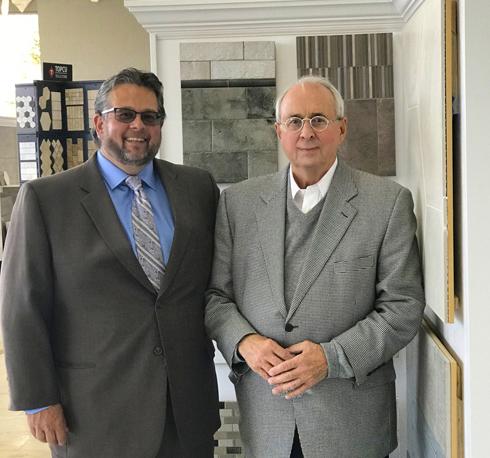
8 minute read
Wellness Walk Your Way to Wellness with Dr. Sheetal DeCaria
WALK YOUR WAY TO WELLNESS
Movement and exercise has long been shown to be beneficial in managing chronic pain. For many of us, accustomed to exercising in gyms or fitness centers, the current pandemic has greatly impacted our exercise regimens.
Advertisement
With the weather warming up, many of us are getting out of the house to take strolls around the neighborhood as a form of exercise. In fact, many healthcare providers will instruct their patients that are older, deconditioned, or suffer from comorbidities, to walk as a means of exercise and physical therapy. Walking is easy to perform, has a low risk of injury, and we do it every day. But is it enough?
A study looking at 52 sedentary patients, aged 18-65 years with chronic low back pain were randomized into aerobic walking vs. active strength training for six weeks. The regimen included a 5 min warm up, 5 min cool down, and five minutes of intense walking on a treadmill. They found both groups improved to similar degrees. They also found that the moderate-intensity walking program done twice a week for six weeks improved functional performance and muscle endurance more for those suffering from chronic back pain.
It is important to keep in mind that these studies are not referring to a leisurely walk in the park, but rather a brisk aerobic-style walk. The kind of walk that raises your heart rate and makes you sweat. I think that is where some patients mistakenly think that leisurely walking can replace a focused exercise program. The findings of a systematic review were inconclusive that leisurely walking improved acute and chronic low back pain.
The American Heart Association recommends adults should engage in 150 minutes of moderate intensity exercise each week. It sounds like a lot, but it can be broken down into 30 minutes a day for five days a week. Even half of that is better than nothing. So what is moderate intensity and how is that measured? According to an article primarily targeting cardiovascular fitness, maximum oxygen uptake (VO2 max) was regarded as the gold standard for the assessment of exercise quality. Based on this concept, walking speed, as well as a patient’s baseline fitness level, will determine whether a walking program will result in a significant increase in VO2 max (i.e be considered a moderately intense form of exercise).
Another sign that you can use to monitor your exercise level (and one that you can actually measure yourself) is target heart rate. The American College of Sports Medicine and American Heart Association recommend you achieve 50% to 85% of maximum heart rate reserve for optimal cardiovascular fitness. If you don’t know your target heart rate, you can go to their website as a reference guide. Implementing an effective walking program Implementing An Effective Walking Program If you decide walking will be your primary form of exercise, you need to commit to doing it on a regular basis. Remember that the time spent walking, the distance walked, and intensity are vital components of your walking program. Just walking from your front door to the mailbox does not count. Slowly increase your distance every day. The Arthritis Foundation recommends starting out with 6,000 steps per day for more debilitated patients and has a Walk With Ease program online to slowly introduce yourself into a walking program. Some activity is better than none, but to truly benefit from a walking program, you need to work up to walking briskly. If you have a mostly sedentary lifestyle, start slow and don’t give up. Remember to stretch, warm up and wear supportive shoes. Also, pay attention to not only distance, but to your heart rate, and the intensity of your stride. Bottom line — any amount of activity will help you, so get started as soon as possible! Revitalize Medical Center is accepting new patients at their Glenview and Evanston locations.
Schedule a consultation 847-834-4018 RevitalizeMedCenter.com
Sheetal DeCaria, MD.
Maximize
The Empact Of Your Philantropy

Gifts to an Evanston Community Foundation (ECF) endowment by bequest or within an estate plan let people continue or increase their annual giving patterns forever.
The Basics
Charitable giving from assets is a valuable element of financial taxplanning strategy — and such gifts provide great satisfaction to thoughtful donors. Gifts of cash and publicly-traded securities or retirement plan assets are the easiest to transfer. Our gift acceptance policies provide guidance on a wider range of asset types and giving vehicles. Of course ECF also accepts lifetime asset transfers for donor advised funds or outright contributions to other funds. Learn more.
C
Good Stewardship And Service
M
The Foundation can help you and your clients to find the options Y for charitable giving that most appeal to them and best suit their circumstances. We don’t advise donors on tax or legal matters, but we CM can explain just how their gift can be put to work in the community MY that’s been so important to them. CY
Do Something To Make A Difference!
CMY
Use our brochure — do something to make a difference! — to launch K a conversation with your clients.
Our Expertise
Unlike national foundations offering donor advised funds under the auspices of financial services firms, we’re experts in investing Evanston’s resources to best address the challenges of our community, across a wide range of interest areas.
Strategies We Support
Charitable gifts timed to confer the greatest tax advantage. Additions to or establishment of endowed funds, so that today’s gifts will give and grow into the future. Establishment of donor advised funds, enabling donors to recommend the charitable use of their gifts over time. Gifts of appreciated securities or real estate, potentially reducing the burden of capital gains taxes. Bequests designating ECF in a will or trust as a beneficiary of a specific amount, a percentage, or a remainder — or of a retirement account, in order to preserve for heirs assets taxed at lower rates.
Designation as a beneficiary on a no-longer-needed life insurance policy, for a tax deduction now.

Hecky Powell “MY BROTHER” A Heartfelt Story Written by Dick Peach.
He was Hecky Powells best friend. A former member of the Leadership Evanston Steering Committee & Board. A longtime member of the Rotary Club of Evanston as president twice. Assistant Governor for the regional Rotary District. Dick has been involved with the Evanston Community Foundation as a former member of the Leadership Evanston Steering Committee & Board. past president of the Chamber of Commerce, chairman of the City of Evanston-Minority, Women and Evanston Small Business Committee, part of the West End Business Association and one of the founders of the Evanston Small Business Association.
I was asked to write about the passing of a very special friend and I’m finding it very hard to express the feeling of now having a hole in my soul, and I’m not sure how I can heal that.
Hecky Powell was a lot more than just a friend, a mentor, an advisor for me, we shared a very special relationship over the years we knew each other. We shared a common belief in the ability of every person to succeed at whatever they desire, if they were willing to work for it. We shared a belief in a strong work ethic as a driving force to success. We shared a passion in helping others to develop that work ethic within themselves. This is where the idea for the WE Foundation had its roots.
Hecky and I had tried to get the high school more involved with the ever-growing population that was not going to be college bound out of high school. They needed guidance and direction to get into a good job that didn’t need a 4 year degree. After a decade of no progress, Hecky decided to endow the WE Foundation. He called to tell me about his plan and said “Oh by the way you’re on the new Board of Directors”. WE has become a real success story for the young people who have gone through the program.
Hecky and I both are known to speak from the heart. In fact, no one ever had to guess what we actually thought about anything. Because we always told people exactly what we thought.
In fact, Hecky’s, statement about everyone being a “mutt” is exactly what I’m talking about. That statement made him Evanston famous. We proudly shared the title “unofficial Mayor of Evanston” courtesy of many city officials over the years because of our deep felt caring for our community, and our involvement in multiple community organizations.
On a very personal level Hecky was special for me, several years back when my young son began his 3 year battle with cancer, Hecky checked in almost weekly to find out how he was doing. His focus was to know if my son, Shelley, or I need anything. Anytime we spoke on the phone the first question he would ask was how my son was doing before we began our conversation. And when we lost our son to cancer Hecky was there for me to talk to and try and make sense of my loss.
Over the years I have been honored with a number of civic awards from various organizations but the one I cherish the most is the award that Hecky and Cheryl gave me two years ago on behalf of the Forrest E. Wood Foundation because it represents the shared belief in working hard for what you achieve and reaching back to help others to succeed. Now over the past few weeks Hecky has been written about in all our local papers, in social media and even as far away as the New York Times. To My Surprise The New York Times carried an article. The focusof the article was about his life and the belief that “no one succeeds on their own and we should always be willing to reach out to help others”. I don’t know what I could add to all the accolades that have been written about my friend.
The one thing I can say is “Hecky was an incredibly special person, there are not many like him in this world, and I was blessed to call him “my brother”.
Karen Kring








